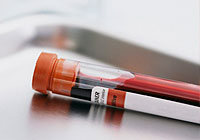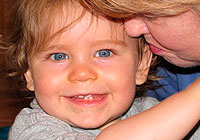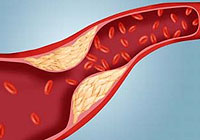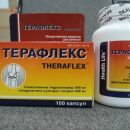What is lymphocytosis and as evidenced by elevated child blood lymphocytes, their types and roles. Is it necessary to visit the hematologist and pediatrician at a high level of lymphocytes in children.
Content

Lymphocytes — leukocyte representatives that are
Protective cells of the immune system. Their formation occurs in red bone
Brain. The main function of these cells — Recognize alien antigens,
who fell into the body and destroy them. Indicators of the norm of lymphocyte in children
Change in the process of growing up. In the percentage of children's rate
lymphocytes in the first few days from birth is no more than 25% of
The total number of leukocytes, by the first week increases to 40-42%, from the first
weeks to six years — up to 45-65%. After six years percent of lymphocytes
decreases and to the majority is 25-40%.
Lymphocytes are several species:
- T-lymphocytes:
killers, helpers and suppressors. Perform antigensnial function; - In lymphocytes
— perform an antigen-representing function; - NK lymphocytes
— Kill target cells (viral and tumor cells).
T-lymphocytes are dominated by quantity and constitute
≈85%, in lymphocytes — On average, about 15%. Together they recognize and destroy
Alien antigens.
Children's lymphocytosis
Lymphocytosis — This is the excess of the level of the norm of lymphocytes in
blood. To clarify the indicators of lymphocytes, consult
Hematologist doctor. Lymphocytosis can be reactive — Display reaction
immune system on an external stimulus (with viral infections), and maybe
malignant — Independent leukocyte disease
(leukemia, for example). Eliminate relative and absolute types of lymphocytosis. For
relative is characteristic of the growth of the percentage of lymphocytes, but the indicator itself remains
within normal. Absolute lymphocytosis — growth in the total number of lymphocytes in
blood. The reasons for the absolute increase in lymphocytes are the following states:
- lymphocytic
leukemia; - Metastase
in the bone marrow; - disease
Crown; - autoimmune
diseases; - infectious
mononucleosis.
To states conducive to the development of lymphocytosis,
Believe:
 Viral
Viral
infections: cytomegalovirus, HIV, windmill, cortex, viral hepatitis, rubella and
whooping cough.- Bacterial
infections: tuberculosis, syphilis, brucellosis. - Infection
Propyful character and parasites: toxoplasmosis. - Pathology
Endocrine system. - Rheumatoid
arthritis. - Diseases,
Supporting tetracycline taking. - Anemia.
- Stressful
lymphocytosis. - Tumors
and prematubic states.
What to do with elevated lymphocytes in children
When improving the level of lymphocytes in a child, contact
for help to pediatrician and hematologist. The doctor may appoint additional
research to identify the presence of an infection causative and determine the state
Immunity and bone marrow. In cases of improving lymphocytes in the complex with
The increase in lymph nodes, liver or spleen will need help not only
hematologist, but also oncologist. In addition to standard surveys, specialists can
If necessary, prescribe a chest radiography, an ultrasound of internal
organs, computed tomography, cytological and histological research
Red bone marrow.
In childhood, massive diseases are relevant,
infections in kindergartens and schools. In such cases, there is a place to be
Infectious lymphocytosis (Smith's disease). With this state of the child, the doctor can
Prescribe bed regime, compliance with proper nutrition, vitamins and
Symptomatic therapy. The use of antibiotics is coordinated with a pediatrician,
If the disease requires their use. Children's doctor must observe a child
up to the restoration of the hemogram. As prevention of infectious
Enhancing the level of lymphocytes in a child need to conduct vaccination in a timely manner,
Follow his lifestyle: observance of personal hygiene and regularity of secrets
Sports activities.









